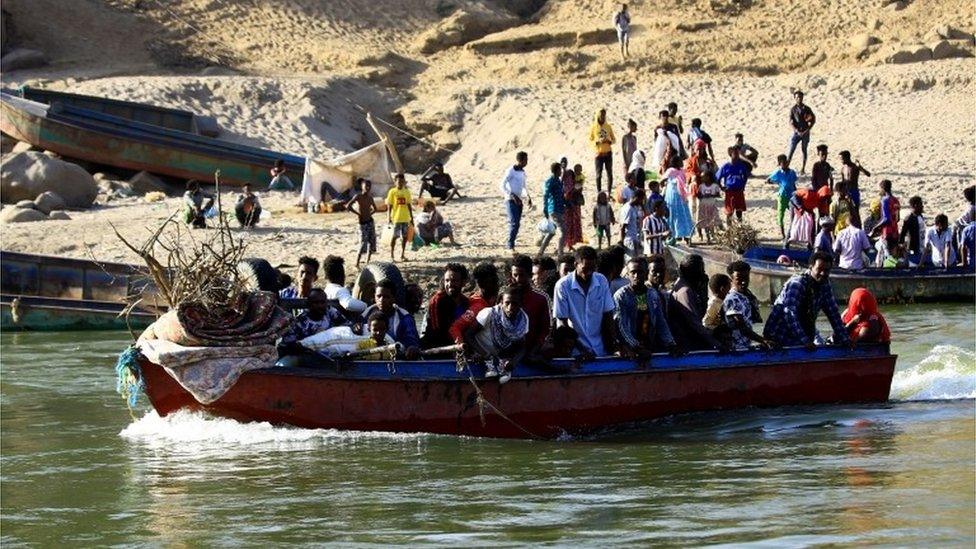Tigray crisis: Ethiopia to repair al-Nejashi mosque
- Published
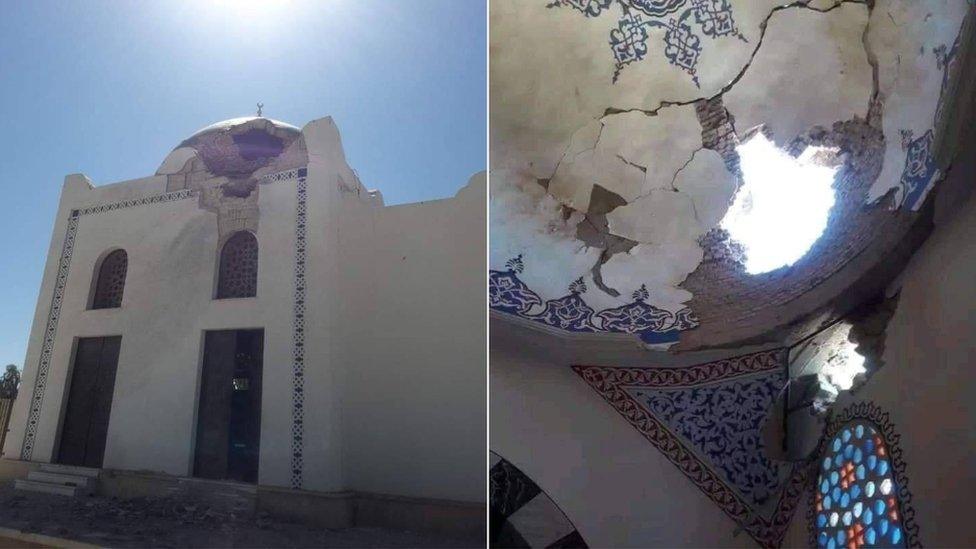
Locals believe the al-Nejashi Mosque is the oldest in Africa
The Ethiopian government has promised to repair a centuries-old mosque that was damaged during the conflict in the northern Tigray region.
The al-Nejashi Mosque was reportedly shelled. Its dome, the minaret and tombs of Islamic figures were damaged.
The government said a nearby church damaged during the conflict would also be repaired.
Locals believe al-Nejashi was built by the first Muslims to migrate to Africa during the time of Prophet Muhammad.
They had fled persecution in Mecca and were given refuge in what was then the Kingdom of Aksum.
Local Muslims believe that 15 disciples of Prophet Muhammad are buried in the damaged tombs.
They also say the mosque is the oldest in Africa, though others believe that title belongs to one in Egypt.
The mosque is near Wukro town, some 800km (500 miles) from Ethiopia's capital, Addis Ababa.
An Orthodox Christian church named Saint Emmanuel was also damaged, but further details are unavailable.
A Turkish aid agency launched a project in 2015 to renovate the mosque, saying it wanted to "preserve the heritage" of the monument, external and wanted it to become a major destination for "religious tourism".
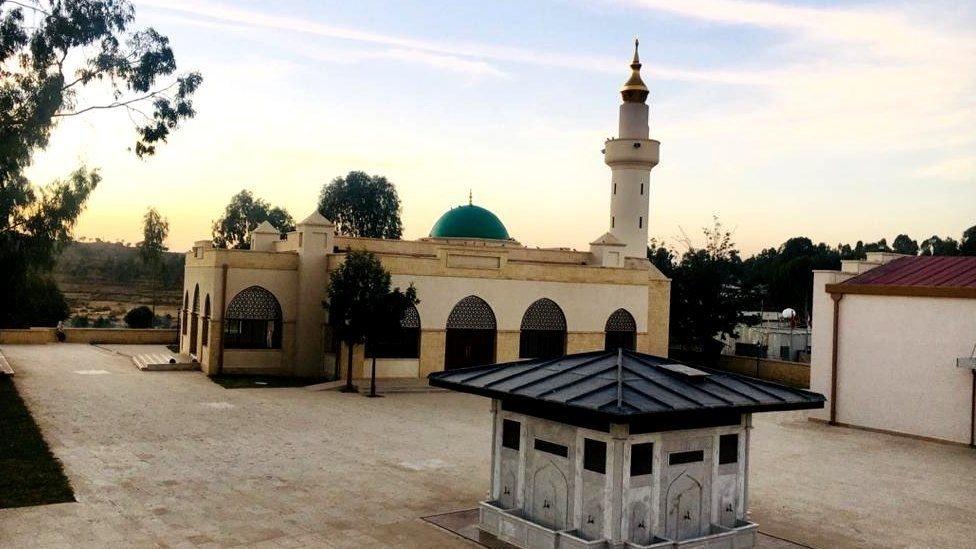
The mosque was renovated with Turkey's help
The mosque and church were damaged during the month-long military operation that led to the Tigray People's Liberation Front (TPLF) being ousted from power in the region on 28 November.
What happened to the mosque?
A Belgium-based non-profit organisation, Europe External Programme with Africa, reported on 18 December that al-Nejashi Mosque was "first bombed and later looted by Ethiopian and Eritrean troops, external".
"Tigrayan sources are saying that people have died trying to protect the mosque," it added.
The government has not commented on the reports. Both the Ethiopian and Eritrean governments also deny that Eritrean forces are in Tigray to help in the fight against the TPLF.

More about the fighting in Tigray:

On Monday, Ethiopian state television quoted residents as saying that TPLF forces had dug trenches around the mosque, without giving any more details.
The government has imposed heavy restrictions on the media in Tigray, making it difficult to know what exactly is happening. Access to Tigray has also been restricted for aid workers.
In a BBC Amharic interview, the deputy director of the Ethiopian Heritage Preservation Authority, Abebaw Ayalew, said a team would be sent to inspect the damage to both the mosque and church before they are repaired.
"These sites are not only places of worship. It is also the heritage of the whole of Ethiopia," he said.
Is this the home of the Ark of the Covenant?
How bad has the conflict been?
It is unclear how many have been killed in the conflict, but Mr Abiy previously said that the military did not kill a single civilian during the operation that led to the TPLF's removal from power.
UN and other human rights bodies are calling for an independent investigation into allegations of against all sides, including the massacre of civilians and the shelling and looting of residential areas and a hospital.
More than 50,000 people have fled to Sudan to escape the fighting.
What is the fighting about?
The conflict broke out in early November, when Ethiopian Prime Minister Abiy Ahmed ordered a military offensive against regional forces in Tigray.
He said he did so in response to an attack on military bases housing government troops in Tigray.
The conflict came after months of feuding between Mr Abiy's government and leaders of the TPLF - the region's dominant political party.
For almost three decades, the party was at the centre of power, before it was sidelined after Mr Abiy took office in 2018 in the wake of anti-government protests.

Five things about Tigray:
1. The Kingdom of Aksum was centred in the region. Described as one of the greatest civilisations of the ancient world, it was once the most powerful state between the Roman and Persian empires.
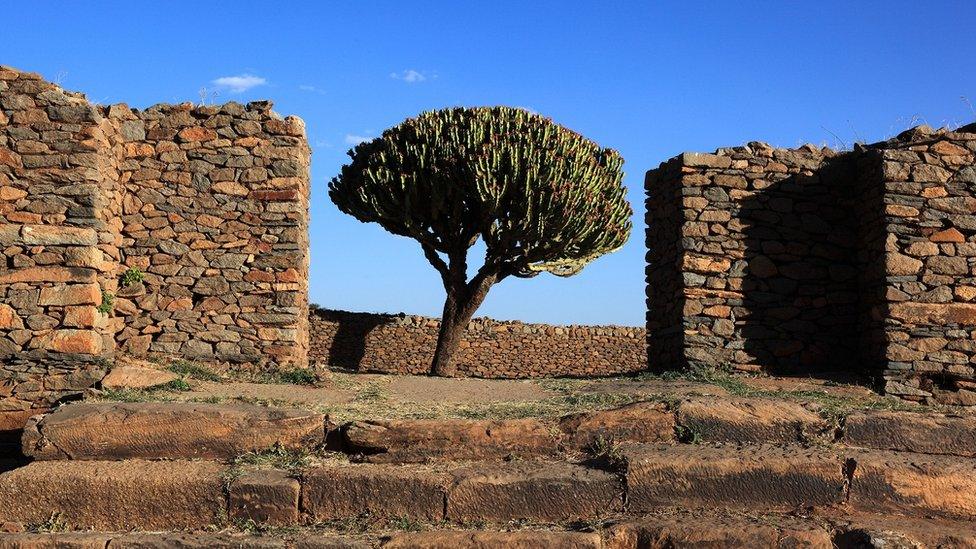
Aksum is believed to have been the home of the biblical Queen of Sheba
2. The ruins of the city of Aksum are a UN World Heritage Site. The site, dating from between the 1st and 13th Century AD, features obelisks, castles, royal tombs and a church which is believed by some to house the Ark of the Covenant.
3. Most people in Tigray are Ethiopian Orthodox Christians. The region's Christian roots stretch back 1,600 years.
4. The region's main language is Tigrinya, a Semitic dialect with at least seven million speakers worldwide.
5. Sesame is a major cash crop, exported to the US, China and other countries.
- Published28 December 2020
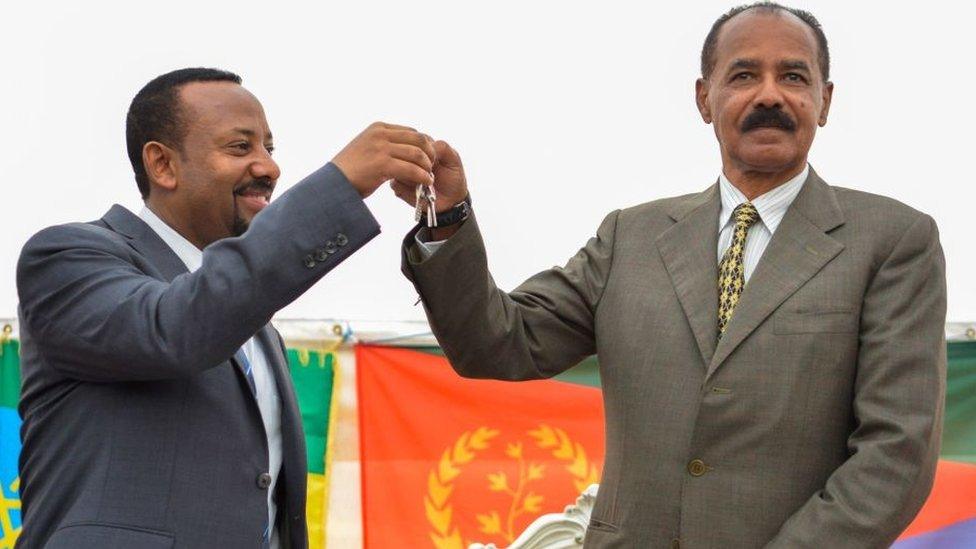
- Published10 December 2020
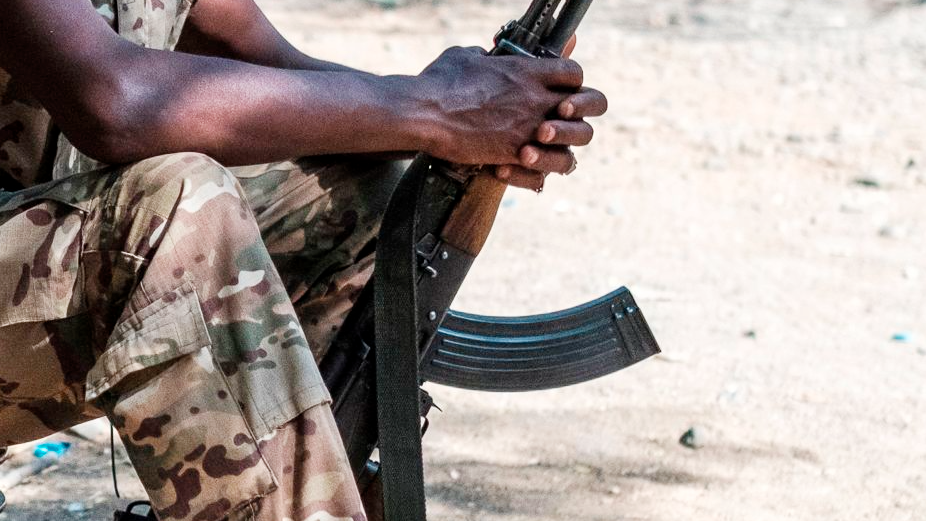
- Published3 December 2020
